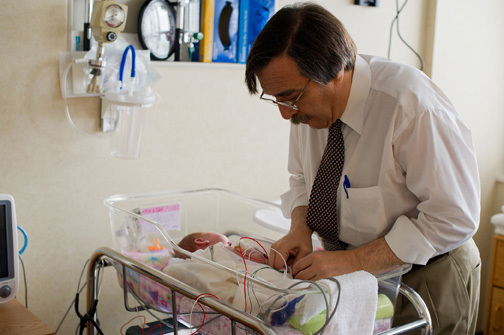Description:
 Some newborn infants have serious reflux problems that can
result in gastric fluids ascending the esophagus to the trachea, where the fluid
can then be aspirated into the lungs.
Some newborn infants have serious reflux problems that can
result in gastric fluids ascending the esophagus to the trachea, where the fluid
can then be aspirated into the lungs.
Current
gastroesophageal reflux (GER) diagnostic tests are invasive, use a pH probe
mounted on a nasoesophageal catheter that does not detect non-acidic gastric
reflux, and have diagnostic inaccuracies and limitations.
Description
GER is
characterized by frequent and persistent heartburn, which occurs when the lower
esophageal sphincter (the valve separating the esophagus and stomach) does not
close properly, allowing liquid and gas stomach contents to back up into the
esophagus. GER typically causes discomfort and irritability. More than half of
all healthy infants experience GER in the first three months of life, with most
outgrowing the condition by the age of 12 to 24 months. However, some
newborns have severe reflux symptoms including respiratory distress, aspiration
pneumonia, and apnea.
Michigan
State University’s invention is a noninvasive GER diagnostic test comprised of
external acoustic sensors and a signal processing and recording device that
accurately measures the frequency, duration, and amplitude of gastric reflux
episodes as they occur. Reflux is detected by up to four accelerometers that are
evenly spaced longitudinally along either the sternum or the thoracic spine and
taped to the infant’s skin. Reflux detection has been confirmed by ultrasound
and compared to other techniques, such as pH probe and upper GI X-rays. An IRB
protocol is in place and a study is underway to examine both symptomatic and
non-symptomatic preterm and full-term infants.
Benefits
·
Noninvasive: The sensors are attached to the
infant’s skin with tape and accurately detect and measure reflux episodes. Other
methods, such as pH probes, impedance monitors, or combinations thereof, are
invasive and require nasoesophageal tube placement.
·
Measures amplitude: Accurately measures the
amplitude of reflux in the esophagus.
·
Useful for long-term monitoring: Other noninvasive
methods, such as ultrasound, are not suited for long-term monitoring.
·
Broad scope of data collected: The device
accurately measures frequency, duration, and amplitude of reflux episodes over
an extended period of time.
Applications
The
invention is useful for physicians and allied health professionals in private
practice or associated with hospitals, including family physicians,
neonatologists, pediatric gastroenterologists, speech and feeding therapists,
and pediatricians. The invention has also been tested in older children (up to
one year) and can thus aid in diagnosis and test of therapeutic usefulness in
older children with dysphagia or cerebral palsy.
Development Status
A
functional prototype has been developed and proof of concept studies are in the
planning stage.
IP Protection Status
Patent
pending